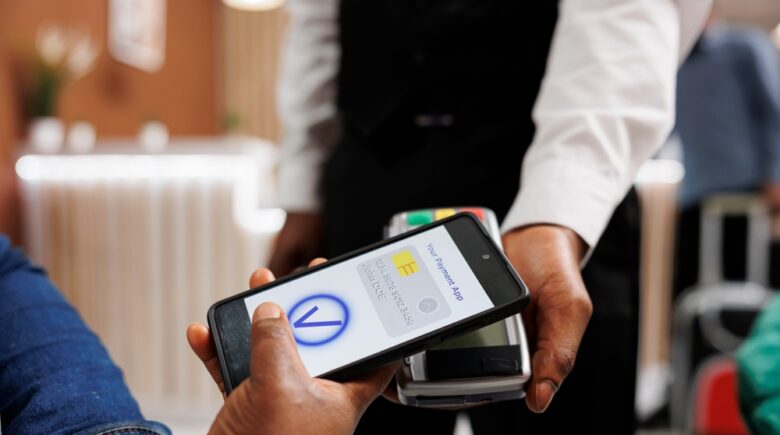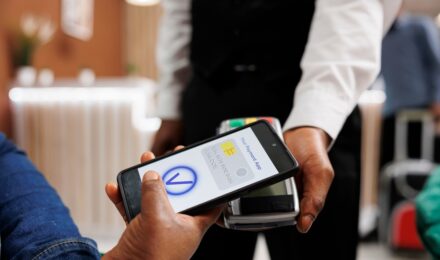Credit cards have been the backbone of consumer spending in the United States for decades, offering convenience, rewards, and credit-building opportunities. Yet the way people use them is rapidly evolving. Mobile wallets such as Apple Pay, Google Wallet, and Samsung Pay have grown from niche tools into mainstream payment methods, integrated into everything from smartphones to wearable devices. By 2030, many analysts predict mobile wallets could replace physical plastic altogether.
This article examines the current state of mobile wallets, the benefits and challenges of a cashless shift, and whether credit cards as physical objects are on the verge of disappearing.
The Growth of Mobile Wallets
Mobile wallets have surged in adoption over the past five years. Contactless payments gained momentum during the COVID-19 pandemic, and in 2025, more than half of in-person credit card transactions are estimated to occur through digital wallets. Retailers large and small have upgraded payment terminals to accept tap-to-pay, further normalizing the technology.
Integration with loyalty programs and digital ID systems has accelerated growth as well. Consumers can now pay, earn rewards, and verify identity in a single step, reducing friction in the purchasing process. For younger generations who rely heavily on smartphones, mobile wallets are becoming the default payment method.
Advantages of Mobile Wallets
The appeal of mobile wallets lies in their convenience and security. Payments can be completed quickly with a tap or a scan, eliminating the need to carry multiple cards. Tokenization, a process that replaces card numbers with unique digital identifiers, adds an extra layer of protection against fraud. Biometric verification through fingerprints or facial recognition further secures transactions.
Two benefits stand out most clearly:
- Streamlined User Experience: Mobile wallets integrate payments, rewards, and identity verification into one ecosystem.
- Enhanced Security: Encrypted transactions and biometric safeguards reduce fraud risk compared to swiping or inserting a physical card.
Obstacles to Full Replacement
Despite their growth, mobile wallets face barriers that could slow or prevent complete replacement of physical credit cards. Not all merchants accept contactless payments, particularly in rural areas or among small businesses with older infrastructure. Consumers also remain concerned about device security; losing a phone or experiencing a system outage could temporarily cut off access to funds.
Cultural and generational preferences play a role as well. Older consumers often prefer the familiarity of physical cards, while some individuals simply view plastic as more reliable than digital systems. These behavioral factors suggest that while mobile wallets will continue to grow, credit cards may not disappear entirely by 2030.
The Role of Financial Institutions
Banks and card issuers are embracing mobile wallets rather than resisting them. Many now partner directly with technology companies to ensure their cards are seamlessly integrated into digital payment platforms. Issuers also use mobile wallet data to enhance marketing, fraud detection, and rewards personalization. This collaboration suggests that financial institutions see wallets as an extension of credit card usage rather than a replacement.
Implications for Rewards and Credit Building
Rewards programs are evolving alongside mobile wallets. Some issuers now provide higher cashback rates or bonus points for wallet-based transactions, incentivizing adoption. At the same time, digital wallets continue to support traditional credit reporting, meaning consumers who pay through Apple Pay or Google Wallet still build credit as they would with physical cards.
The shift to mobile payments may also pave the way for new types of rewards, such as instant digital rebates or cross-platform loyalty integration, further increasing wallet appeal.
Looking Toward 2030
Whether mobile wallets fully replace plastic by 2030 will depend on several factors: the pace of merchant adoption, consumer trust in digital security, and regulatory developments around payment systems. The rise of central bank digital currencies (CBDCs) could accelerate the transition, as integration with wallets would make them a primary channel for both traditional credit and digital money.
Still, it is likely that physical cards will remain in circulation for at least another decade, even if they become secondary to digital tools. A hybrid future—where mobile wallets dominate but plastic persists for backup or preference—appears most realistic.
Conclusion
Mobile wallets are redefining how consumers use credit cards in 2025, offering convenience, security, and integration with broader digital ecosystems. While many predict they could replace physical cards by 2030, challenges such as merchant adoption gaps, consumer trust, and generational habits suggest plastic will not vanish entirely. Instead, the future is likely to be hybrid, with mobile wallets leading the way but physical cards continuing to play a supporting role. For consumers, the key is to adopt digital tools strategically while maintaining backups to ensure uninterrupted access to credit.
References
- Federal Reserve – Payment Systems Research
- Pew Research Center – Mobile Payment Adoption Trends
- JD Power – U.S. Credit Card Satisfaction Study
- Forbes – The Future of Digital Wallets
Credit cards have been the backbone of consumer spending in the United States for decades, offering convenience, rewards, and credit-building opportunities. Yet the way people use them is rapidly evolving. Mobile wallets such as Apple Pay, Google Wallet, and Samsung Pay have grown from niche tools into mainstream payment methods, integrated into everything from smartphones to wearable devices. By 2030, many analysts predict mobile wallets could replace physical plastic altogether.
This article examines the current state of mobile wallets, the benefits and challenges of a cashless shift, and whether credit cards as physical objects are on the verge of disappearing.
The Growth of Mobile Wallets
Mobile wallets have surged in adoption over the past five years. Contactless payments gained momentum during the COVID-19 pandemic, and in 2025, more than half of in-person credit card transactions are estimated to occur through digital wallets. Retailers large and small have upgraded payment terminals to accept tap-to-pay, further normalizing the technology.
Integration with loyalty programs and digital ID systems has accelerated growth as well. Consumers can now pay, earn rewards, and verify identity in a single step, reducing friction in the purchasing process. For younger generations who rely heavily on smartphones, mobile wallets are becoming the default payment method.
Advantages of Mobile Wallets
The appeal of mobile wallets lies in their convenience and security. Payments can be completed quickly with a tap or a scan, eliminating the need to carry multiple cards. Tokenization, a process that replaces card numbers with unique digital identifiers, adds an extra layer of protection against fraud. Biometric verification through fingerprints or facial recognition further secures transactions.
Two benefits stand out most clearly:
- Streamlined User Experience: Mobile wallets integrate payments, rewards, and identity verification into one ecosystem.
- Enhanced Security: Encrypted transactions and biometric safeguards reduce fraud risk compared to swiping or inserting a physical card.
Obstacles to Full Replacement
Despite their growth, mobile wallets face barriers that could slow or prevent complete replacement of physical credit cards. Not all merchants accept contactless payments, particularly in rural areas or among small businesses with older infrastructure. Consumers also remain concerned about device security; losing a phone or experiencing a system outage could temporarily cut off access to funds.
Cultural and generational preferences play a role as well. Older consumers often prefer the familiarity of physical cards, while some individuals simply view plastic as more reliable than digital systems. These behavioral factors suggest that while mobile wallets will continue to grow, credit cards may not disappear entirely by 2030.
The Role of Financial Institutions
Banks and card issuers are embracing mobile wallets rather than resisting them. Many now partner directly with technology companies to ensure their cards are seamlessly integrated into digital payment platforms. Issuers also use mobile wallet data to enhance marketing, fraud detection, and rewards personalization. This collaboration suggests that financial institutions see wallets as an extension of credit card usage rather than a replacement.
Implications for Rewards and Credit Building
Rewards programs are evolving alongside mobile wallets. Some issuers now provide higher cashback rates or bonus points for wallet-based transactions, incentivizing adoption. At the same time, digital wallets continue to support traditional credit reporting, meaning consumers who pay through Apple Pay or Google Wallet still build credit as they would with physical cards.
The shift to mobile payments may also pave the way for new types of rewards, such as instant digital rebates or cross-platform loyalty integration, further increasing wallet appeal.
Looking Toward 2030
Whether mobile wallets fully replace plastic by 2030 will depend on several factors: the pace of merchant adoption, consumer trust in digital security, and regulatory developments around payment systems. The rise of central bank digital currencies (CBDCs) could accelerate the transition, as integration with wallets would make them a primary channel for both traditional credit and digital money.
Still, it is likely that physical cards will remain in circulation for at least another decade, even if they become secondary to digital tools. A hybrid future—where mobile wallets dominate but plastic persists for backup or preference—appears most realistic.
Conclusion
Mobile wallets are redefining how consumers use credit cards in 2025, offering convenience, security, and integration with broader digital ecosystems. While many predict they could replace physical cards by 2030, challenges such as merchant adoption gaps, consumer trust, and generational habits suggest plastic will not vanish entirely. Instead, the future is likely to be hybrid, with mobile wallets leading the way but physical cards continuing to play a supporting role. For consumers, the key is to adopt digital tools strategically while maintaining backups to ensure uninterrupted access to credit.







